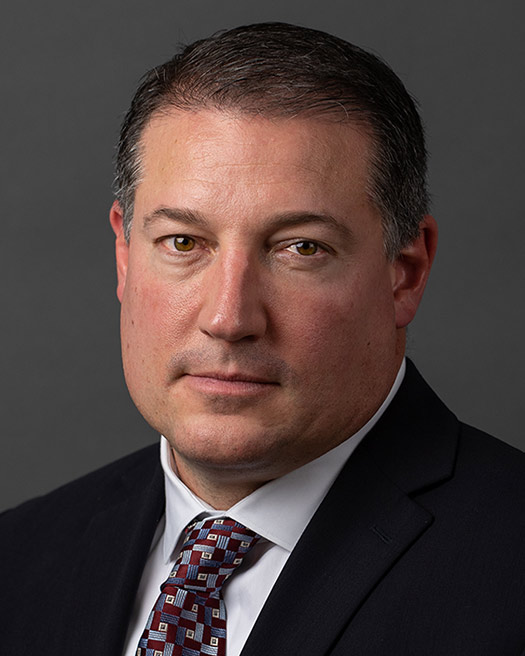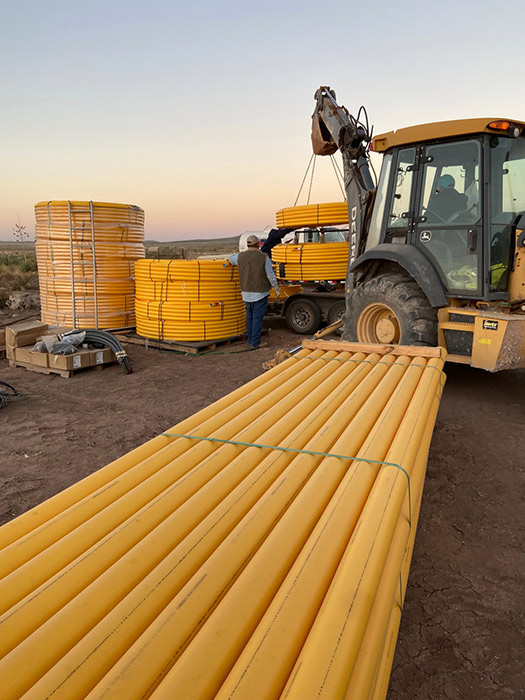November 2023, Vol. 250, No. 11
Guest Perspective
PPI President Touts Safety of Plastic Pipes
(P&GJ) — David Fink, president of the Plastics Pipe Institute Inc. (PPI), is a chemical engineer and chemist by training, He has devoted his entire career to plastics, beginning with his work in polyethylene resin at Union Carbide (UC) Corporation and narrowing in focus to resins for pipe applications after UC’s acquisition by Dow Chemical in 2001.
Next, he spent 13 years at WL Plastics, one of the largest polyethylene pipe manufacturers in North America, where he managed commercial sales, engineering and business development, serving on the PPI board for several of those years.
Ever since taking the reins of PPI at the outset of a global pandemic, Fink has seen a bright future for the plastics pipe industry and a growing role for its products across an expanding range of underground applications.
In the following interview, he talks about the growing demand for plastic pipe in the oil and gas industry, how PPI helps to establish energy standards and the advantage of plastics where horizontal directional drilling is used.
P&GJ: Can you tell us who your members are and tell us about the institute’s mission?
David M. Fink: The Plastics Pipe Institute, Inc. (PPI), is a non-profit trade association dedicated to the advocacy and advancing the use of plastics in pipe infrastructure systems because they are smart, economical and sustainable solutions. The mission of PPI is “Improving quality of life today and for generations to come by championing the advancement, acceptance, and use of sustainable and resilient plastic pipe systems.”
Our membership is comprised of North American companies in plastic resin and additives production, pipe, fitting and conduit manufacturing, related industry equipment, distributors, industry professionals and foreign affiliates.
We have five membership divisions: Building & Construction, Drainage, Municipal & Industrial, Power & Communications, plus the Energy Piping Systems Division that is focused on the gas and oil industries.
P&GJ: Is membership in PPI growing? What geographic regions have shown the most growth?
Fink: Yes, with the growth in demand for plastic piping systems for water and sewer, oil and gas, natural gas distribution, industrial and mining applications, telecommunications and power conduit, and applications like hot and cold water plumbing and geothermal, PPI’s membership has grown by approximately five new member companies every year during the past several years. Being deemed essential during Covid-19 our industry continued to work on installations of new piping infrastructure, as well as rehabilitation of the older infrastructure requiring replacement.
Growth has been equally distributed across North America, with new members coming from Canada, Mexico and USA.
P&GJ: How is demand for plastic pipes in the oil and gas industry compared to five years ago?
Fink: For gas gathering, demand is down about 50% compared to five years ago, 2018, which was a record year, but it is up 50% percent over the Covid low in 2020. In gas distribution, demand in 2022 was at an all-time high even compared to a very strong 2018.
P&GJ: To what degree is PPI involved in establishing industry standards?
Fink: This is one of our key activities to support members and the industry. PPI is directly involved in almost every standards organization in North America. In fact, we typically have leadership roles in all the standard writing organizations. In oil and gas that includes ASTM, API, CSA, AGPA, ASME, ISO and others.
P&GJ: What are the key benefits you focus on when discussing plastic piping options for the energy sector?
Fink: Proven safety record, zero corrosion, long-life, toughness, sustainability, ability to use horizontal directional drilling (HDD) plus other trenchless installation methods.
P&GJ: With future projects for U.S. contractors shifting toward replacement pipe over new construction, does that mean an increasing amount of work involving plastic pipe?
Yes, plastic is the preferred and proven piping material for oil and gas. As utilities replace their aging systems (CI, BS, vintage plastic) they choose polyethylene [PE] more than 95% of the time. Increasingly, PA12 is also being considered for replacement of steel in new construction and the rehab of higher-pressure lines. In the oil patch, as systems age, lines are routinely replaced with new plastic piping and spoolable composite piping.
P&GJ: The oil and gas industry has sometimes been slow to adopt new materials and methods. Has plastic pipe been a tough sell?
Fink: PE has been used in oil and gas extensively for more than 50 years. Some newer materials are breaking into the North American markets. PA12 was adopted in the 49 CFR, Part 192 for regulated applications in 2019. Spoolable composite piping produced to API 15S is used extensively in gas gathering operations, but is not yet included in 49 CFR, Part 192. There have been moves to streamline the approval process for special permits requesting spoolable composite materials.
P&GJ: Is the growing focus on environmental issues working for or against plastic pipe as an option?
Fink: This is a strong selling point for plastics. PE and PA can be used in horizontal directional drilling, plus other trenchless installations (vs. open trench), minimizing the impact to the environment. Plus, once it’s installed and fused it becomes a monolithic, leak-free system, reducing potential methane emissions.
P&GJ: Are there any other specific challenges or pending regulation facing the industry that PPI and its members are trying to address?
Fink: PPI has been working with PHMSA and others for years to get spoolable composite piping materials recognized in 49 CFR, Part 192 regulated applications. PHMSA, working with the EPA, is posing tighter and tighter controls on methane, but plastics are well positioned to help reduce methane leaks. In gas distribution, attacks against natural gas are a threat to the growth of these systems.








Comments